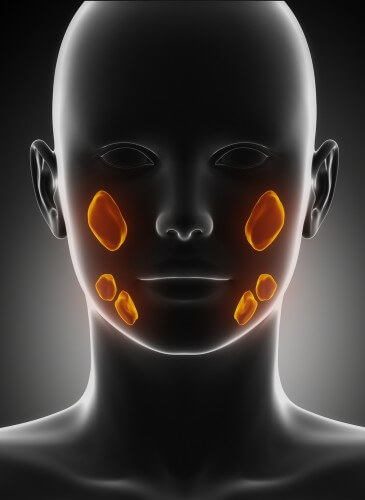Dr. Dror Pixler from the Faculty of Engineering in Bar-Ilan is the winner of the Lord Trunberg Award for 2014 * So far, the method has been successfully applied in clinical trials, among others in Sheba, and has enabled simple and quick detection of head and neck cancer and pharyngeal cancer

Dr. Dror Pixler, who developed a state-of-the-art technology for detecting cancerous tumors, is the winner of the Lord-Trunberg Award for 2014. Dr. Pixler was chosen to receive the award by the Academy of Medical Sciences in London. During the year, Dr. Pixler will carry out joint research with scientists at King's College London.
Dr. Pixler heads a group of researchers from Bar-Ilan University, from the Faculty of Engineering and the Institute for Nano and Advanced Materials, who created an optical system integrated with gold nanoparticles, which provides a method for detecting cancerous tumors non-invasively and without ionizing radiation. So far, the method has been successfully applied and has enabled simple and quick detection of head and neck cancer and pharyngeal cancer, including: tongue, throat, and vocal cord cancer in animals. The research is currently at the feasibility stage for human trials.
According to the researchers, the technology, which is suitable for different types of cancer, mainly cancer of the tongue and vocal cords but also breast cancer and melanoma, makes it possible to distinguish between normal and damaged tissue and detects the presence of cancer cells, even when they are hiding under "healthy" tissue, an operation that a normal optical system fails to perform.
According to Dr. Pixler, one of the methods for tissue characterization is the measurement of their optical parameters. "The new method we developed is based on light reflection and diffusion measurements combined with the introduction of gold nanoparticles that bind specifically to the cancerous tissue, which enables its characterization" he says. At this stage, the method allows the detection of cancer cells at a depth of up to 6 mm; The approach was successfully tested in mice infected with head and neck cancer and in the tongues of rats infected with oral cancer.
A number of articles based on the new research were published in the leading scientific journals in the field of nano - Nano letters, in the Journal of biophotonics and in the leading newspaper in the field of oral medicine - Journal of Dental Research. The research is accompanied by clinical trials conducted in collaboration with a number of doctors led by Prof. Avraham Hirschberg from the School of Dentistry at Tel Aviv University and in collaboration with other doctors from Sheba Hospital in Tel Hashomer, among them Prof. Michael Wolff, head of the A.G. Department.
The new technology developed by the group of researchers from Bar-Ilan was presented at the main event of the Israeli hi-tech and biomed industries - MIXiii 2014, which was held at the exhibition grounds in Tel Aviv this month.

4 תגובות
Actually finding drugs that kill cells is not a problem (we know how to kill well...) the problem is finding a drug that kills the cells without a small (and sufficient) amount of the cancer cells developing resistance to it. As soon as there is resistance, even of a small group, because the cells multiply so quickly, you have reached the exact same problem again.
Herzl, your question is of course good. I'm just guessing that the answer is that they haven't invented a suitable medicine yet. This is probably what the Weitzen Institute is working on in the "biological computer" project, where swallowing a drop will be both the diagnosis and the cure for known diseases.
The amount of articles about cancer is huge and yet
There is still no pill that cures it or reduces it.
If the gold particles bind specifically to the tumor - why not bind to them some medicine that will kill the cells?